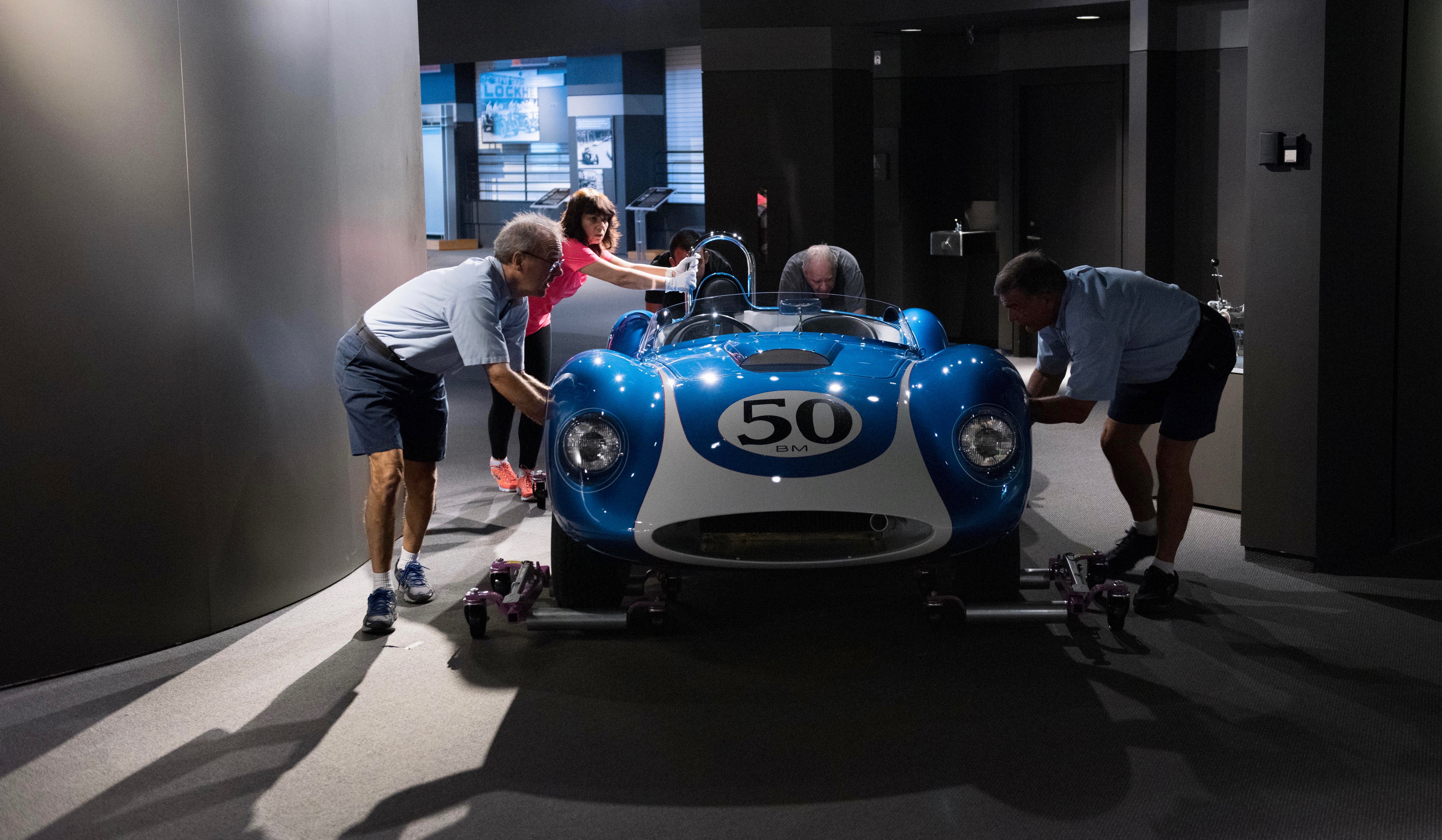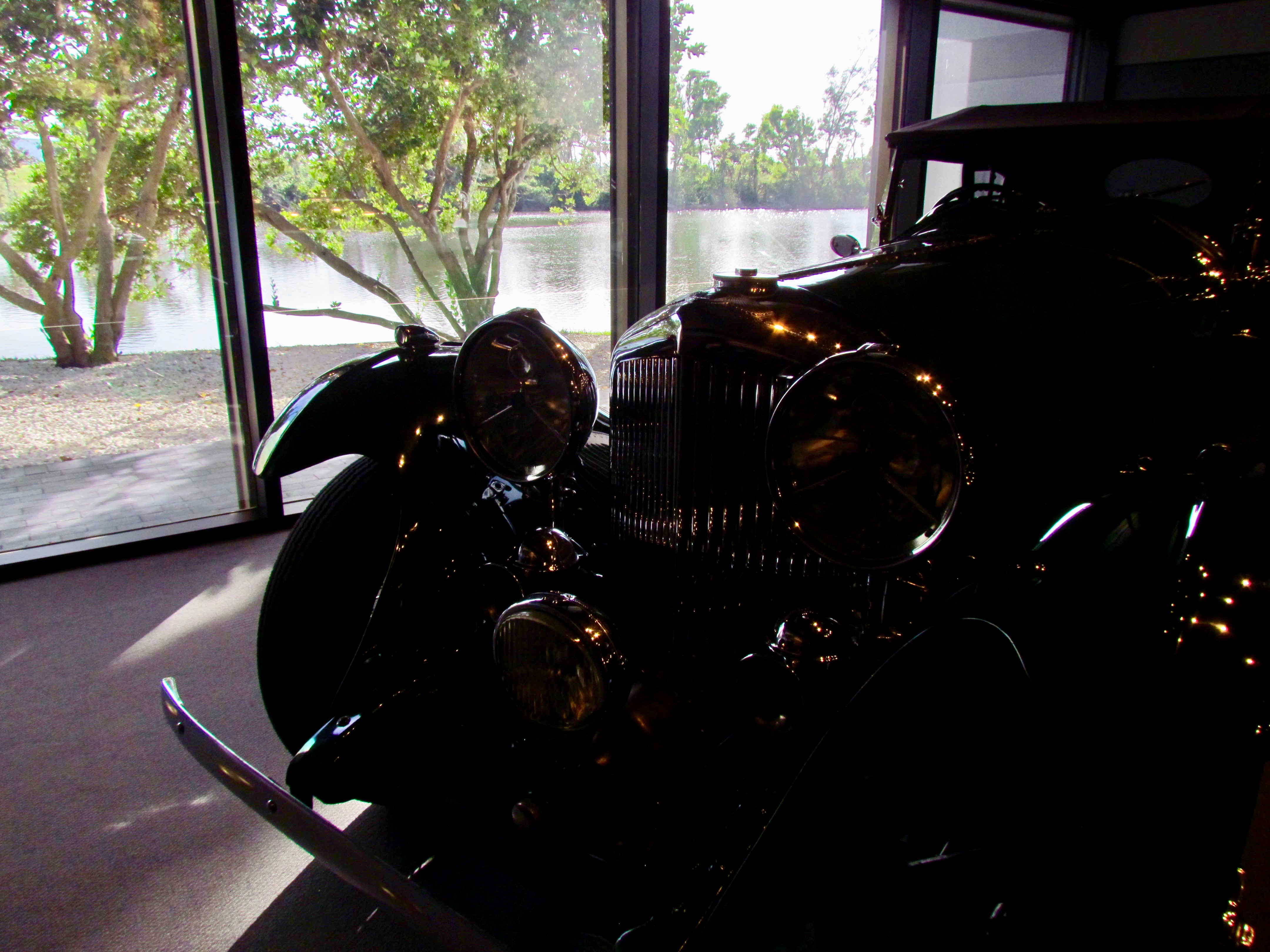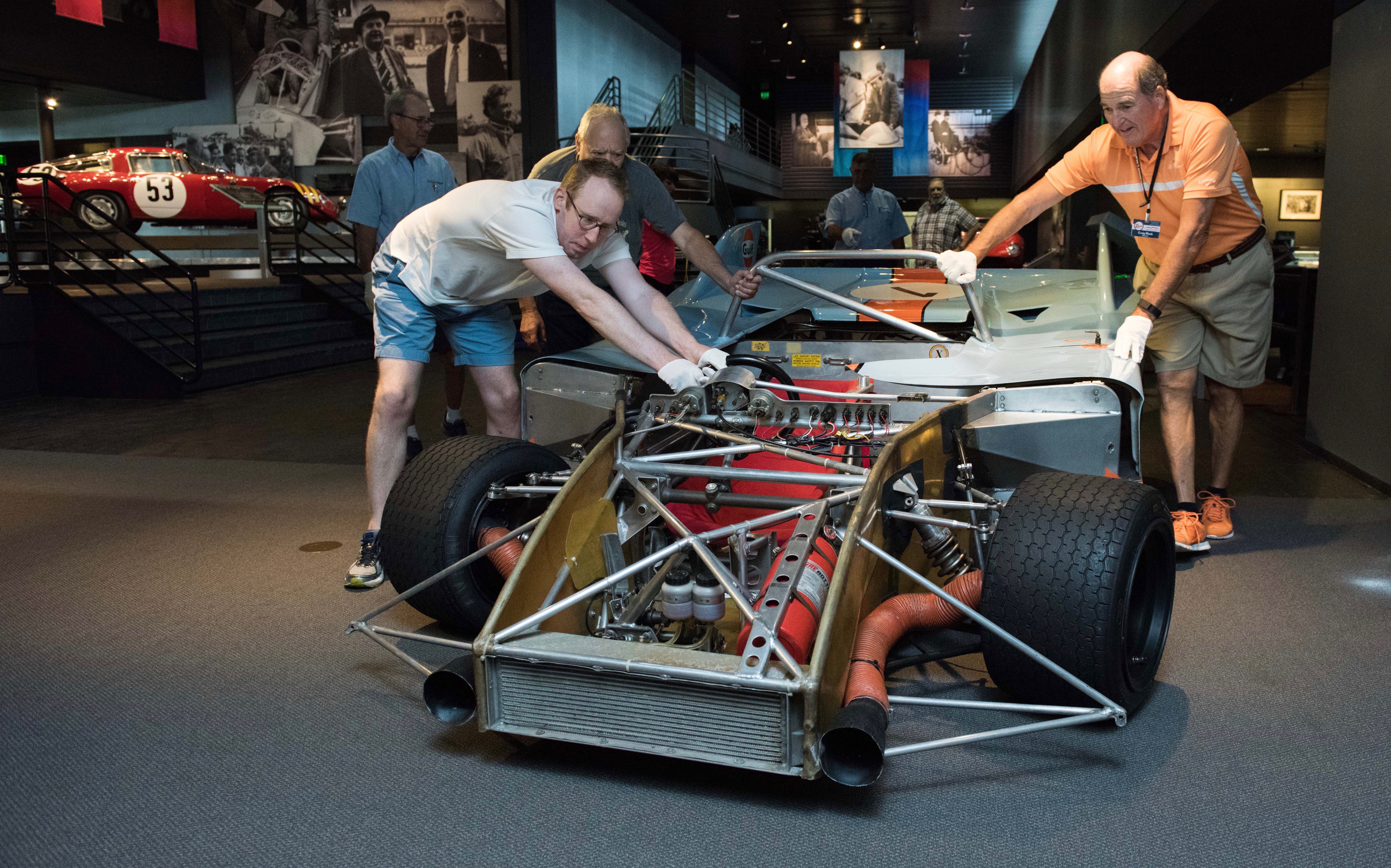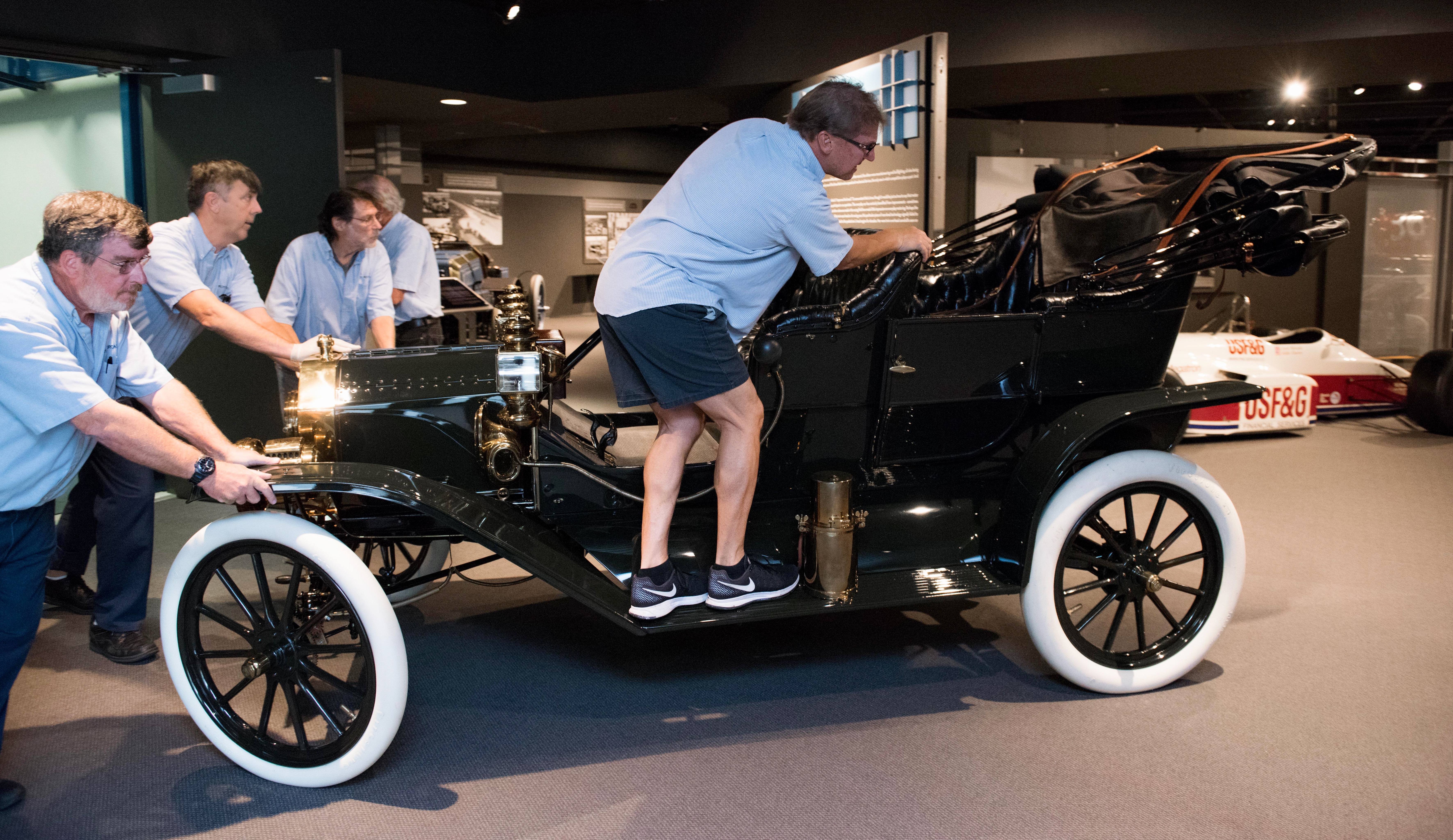
In September, Hurricane Irma assaulted Naples, Florida, with Category 4 fury. Less than a half mile from the Gulf beaches, winds at the airport were clocked at 143 miles per hour. Hangars were flattened. Debris penetrated the airport’s terminal.
Across the street, the storm ripped away a building’s roof, exposing its contents to wind and water. Near that stricken building stood another structure, one that houses one of the world’s most-valuable car collections, which includes automobiles that are not only amazing and rare, but unique, and some of the world’s most-historic racing cars. Plus, what many consider to be the best collection of automotive literature and photography on the planet.
As damaging as water and wind can be to a car, imagine the destruction they can wrought on books and photos.
So how much damage did Irma do to The Revs Institute/Collier Collection?
“We had two tiny water leaks in the roof,” said a much-relieved Mark Vargas, who is both the institute/museum’s chief operating officer and the director of its library and archives.

In the aftermath of hurricane-caused flooding in Texas, Florida and elsewhere, and the horrific fire damage inflicted on the West Coast, I discussed with an official from Hagerty, the collector car insurance company, about whether there are preventive measures a museum or even an individual car collector could make to protect such cherished, sometimes irreplaceable possessions.
He immediately pointed to the Revs Institute, situated just a foot or two above sea level and located right there in Hurricane Alley. I was in Florida in January to attend Mecum’s huge collector car auction at Kissimmee, and made a side-trip down the peninsula to see how Revs kept its cars high and dry during such a devastating storm.
First, some background: Naples is located on Florida’s southwestern coast, in Collier County, which takes its name from Barron Collier, who built an advertising and media empire in New York City, owned hotels and banks, was involved in telephones and transportation (some credit him with the widespread use of the white and yellow lines that keep traffic orderly on our roads), and was a major real estate developer in Florida.
Collier’s sons were among the founders of organized sports car racing in the United States. One of his grandsons is Miles Collier, who also raced, as well as assembling the amazing Collier Collection and establishing the Revs Institute, which includes the facility in Florida and an academic program at Stanford University in northern California.

For a couple of decades, the Collier Collection was a private car museum in Naples, where vehicles were displayed within dioramas so those invited for viewing could see them in historical context.
During that private period, Collier and his team worked to develop its philosophy and practice of preservation rather than restoration or modification and modernization of vintage vehicles. They also enlarged the collection — of cars and documents — and devised new conservation practices for its preservation.
With the establishment of the Revs Program at Stanford, a major expansion of the Florida facility was undertaken. When the collection was re-opened for public viewing in 2014, the BBC called the facility and its contents, “Florida’s other magic kingdom.”
To maintain the magic despite the facility’s location in hurricane-harm’s way, measures were taken during the expansion and reconstruction to protect the building’s contents. And it wasn’t just when the building was built that such measures were taken, Vargas explained.
“This place is a fortress,” said Vargas, who noted that there are hurricane shutters that descend over the building’s windows, while drains and electrical systems are checked on a regular basis, and that when the staff goes into “hurricane mode,” there’s a manual to follow and a “huge” checklist to verify that things are done.

“Everyone has their task,” he added.
And those tasks include checking on the supply of mayonnaise.
Mayonnaise? Yes, mayonnaise, and not to slather on a car as a way to protect its surface.
Vargas joined the institute team two years ago. He grew up in Gary, Indiana, and like so many others there, went to work in the steel mills. But he also was going to college, and was volunteering in the campus library. When the mill laid off its workers, he focused on his studies, eventually earning a pair of master’s degrees from the University of Maryland and embarking on a career managing university libraries.
His initial duties at the Revs involved its library and the digitizing and meta-tagging of its documents and photographic archives. So far, 500,000 images are available for viewing, with 6,000 more added each month, he said.
But back to the mayonnaise… During one of the regular hurricane preparation meeting at the institute, one of the items on a checklist was to check the mayonnaise supply. Vargas wondered why. “For the tuna-salad sandwiches if you’re stuck here,” he was told.
“That’s the level of preparation at this place,” he said, explaining that food is kept, and kept fresh, in case staff are confined to the building during an emergency of duration.

Wind and water aren’t the only potential threats to the museum and its collections. Fire is another.
When fires approached the billion-dollar Getty art museum in Los Angeles last year, people wondered if the paintings and other objects should be removed to protect them. They were not, because as artnet.com reported, the museum was designed with reinforced concrete and travertine stone-covered exterior walls and crushed rock on its roofs, with a million-gallon water tank feeding a system to soak the surrounding grounds, and with other measures to protect what was inside, including an air system designed to prevent smoke from entering the galleries, which also can be sealed off as needed.
Without going into details, Vargas said many areas of the Revs’ building have systems that suck oxygen out, thus removing one of the fuels needed for a fire.
And again, precautions not only have been taken, but are continually updated.
“Every year we look to see what we can do better,” Vargas said, “and we add to the plan every year.”
As Irma worked her way toward southern Florida, many of the Revs staffers were in Connecticut for the annual Lime Rock Historic Festival, a vintage racing program held every Labor Day weekend. Arriving back in Naples, they launched into their checklists and preparations.

For example, each of the bookcases and files in the library and archives — already up on the building’s second floor — were wrapped in plastic to protect against the potential of a leak in the roof. Measures also were taken in the museum’s garage, where preservation and, as needed, restoration work is done to the car collection.
The museum’s collection includes around 115 vehicles, and nearly all of them are maintained in running condition.
“It’s not a car museum,” Vargas said. “It’s a living art museum with cars as the objects. And they live. They actually run. Imagine taking a Rembrandt outside and running it at 100 miles per hour! These cars were born to be driven.”

Speaking of the cars, in a single day the 70 usually displayed on the museum’s main floor were wheeled up to the second level. The procedure was planned and incorporated into the design of the expanded structure when it was erected earlier this decade. Adding a second level provided a place high enough to save the cars even if there were a major storm surge.
“When the addition was planned, it was made as bulletproof as possible,” Vargas said.
And it’s not only the cars and documents that are protected. In addition to the 20 staffers, the museum has a fleet of 140 volunteers/docents, and everyone undergoes training in CPR and the use of the AED equipment.
And again, training is ongoing, including building evacuation procedures should they be needed when visitors are present, and things such as the roof are checked for leaks, even after a drizzle.
But what else would you expect from a facility that is so careful with its collection that before shipping its 1955 D-type Jaguar upstate for display at the 2017 Amelia Island Concours d’Elegance, the car, still in all-original if somewhat fragile condition, and not exposed to changes in temperature, humidity or even lighting in nearly two decades, was packed within 50 beanbags of silicon desiccant to protect its most delicate features?






We are Fortunate to have a Collection like this, it’s a Treasure for the Future, so people can appreciate The Classic of Years back, Thanks to the Colliers Group
Agreed!
I am honored to be a Docent at the Revs institute. All of the volunteers are totally dedicated to the cars and what they represent. The staff at Revs are equally dedicated and are blessed with skills that would amaze the most gifted Automobile Engineer. We all love the cars and the museum. I truly feel blessed to be apart of this out standing organization.
The Revs Institute is a legacy to the automotive world that will last forever!
It makes us proud that people like you are preserving and protecting automotive history. Thank you! And all the volunteers.
Loved the article about the car collection in Naples!
We love it too! It’s comforting to know that people are dedicated to preserving and protecting automotive history.